- The Challenges of Permanent Elimination of Phytophthora
- Fungal Persistence
- Wide Host Range
- Genetic Diversity
- Environmental Factors
- Limited Control Options
- Unpredictable Genetic Variability
- Pathogen’s Persistence in Soil
- Host Range and Cross-Contamination
- Reservoirs in Plant and Water Bodies
- Plant Reservoirs
- Water Bodies
- Interactions between Plant and Water Reservoirs
- Climate and Environmental Factors
- Lack of Effective Treatment Options
- Fungicide Resistance
- Environmental Concerns
- Limited Spectrum of Activity
- Integrated Management Approaches
- Human Intervention and Transport
- Plant Trade
- Soil and Water Movement
- Human Activities
- Need for Integrated Management Approaches
- Diversification of crops
- Cultural practices
- Chemical control
- Biological control
- Research and education
- “Question-Answer”
- What is Phytophthora and why is it difficult to eliminate?
- What are some inhibitors that prevent the long-term control of Phytophthora?
- Why are oospores a significant inhibitor in controlling Phytophthora?
- How does the rapid production of propagules contribute to the difficulty of controlling Phytophthora?
- What are some control measures that have been used against Phytophthora?
- Why is the adaptability and evolution of Phytophthora a challenge in controlling the pathogen?
- Can Phytophthora ever be permanently eliminated?
- “Video” Phytophthora – Stop the spread
Phytophthora is a destructive group of plant pathogens that cause extensive damage to crops and natural ecosystems. Despite efforts to control and eradicate Phytophthora, it has proven to be a resilient and persistent threat. This article explores the inhibitors preventing long-term control of Phytophthora and why it cannot be permanently eliminated.
One of the main inhibitors preventing long-term control of Phytophthora is its ability to adapt and evolve. These pathogens have the capacity to rapidly overcome control measures, such as fungicides and resistant plant varieties, through mechanisms such as genetic mutation and recombination. This allows Phytophthora to develop resistance to control methods, rendering them ineffective over time.
Another inhibitor is the wide host range of Phytophthora. These pathogens have the ability to infect and damage a wide variety of plant species, making it difficult to implement control strategies that target all potential hosts. This diversity of hosts also provides a continuous source of infection, allowing Phytophthora to persist and spread even in the absence of susceptible crops.
Additionally, environmental factors play a crucial role in the survival and spread of Phytophthora. These pathogens thrive in moist and warm conditions, making it challenging to completely eradicate them from agricultural and natural environments. The presence of reservoirs, such as infected plant debris and water sources, further complicates control efforts by providing a constant source of inoculum.
In conclusion, the adaptability and evolution of Phytophthora, its wide host range, and environmental factors act as inhibitors preventing long-term control and permanent elimination of these pathogens. Understanding and addressing these inhibitors are essential for developing more effective strategies to manage and mitigate the impact of Phytophthora on crops and ecosystems.
The Challenges of Permanent Elimination of Phytophthora
Phytophthora, a genus of destructive plant pathogens, poses significant challenges when it comes to permanent elimination. Despite efforts to control and manage the spread of Phytophthora, complete eradication remains elusive. This article explores some of the inhibitors that prevent long-term control of Phytophthora.
Fungal Persistence
One of the main challenges in eliminating Phytophthora is its ability to persist in the environment. The extensive production of long-lived resting spores called oospores allows for the survival of Phytophthora even in adverse conditions. These oospores can remain dormant in soil or plant debris for extended periods, ready to infect susceptible plants when conditions become favorable. As a result, even if infected plants are removed or destroyed, the presence of oospores can lead to the reemergence of Phytophthora.
Wide Host Range
Phytophthora has a wide host range, infecting numerous plant species across different agricultural and natural environments. This broad diversity of potential hosts makes it challenging to completely eradicate Phytophthora. Even if control measures are implemented for one specific host or location, the pathogen can easily spread to other susceptible plants, further complicating eradication efforts.
Genetic Diversity
Phytophthora exhibits a high degree of genetic diversity, allowing the pathogen to rapidly adapt and evolve. This genetic variability facilitates the development of resistant strains, making it difficult to eliminate Phytophthora using conventional control methods such as pesticides or fungicides. The constant evolution of the pathogen necessitates ongoing research and adaptation of control strategies to effectively manage Phytophthora infections.
Environmental Factors
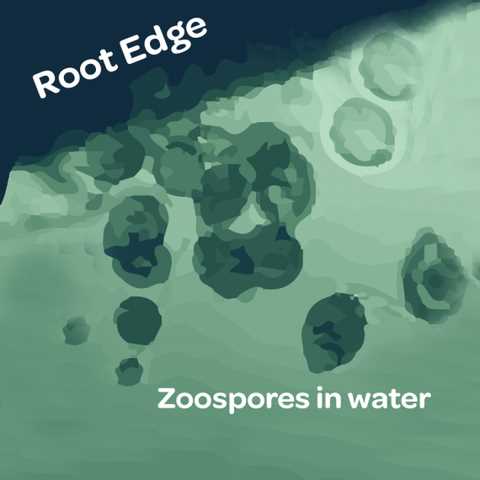
Environmental factors also play a crucial role in the persistence and spread of Phytophthora. The pathogen thrives in moist and humid conditions, making it particularly challenging to control in regions with favorable climates. Moreover, factors like water movement, temperature fluctuations, and the presence of alternate hosts can contribute to the spread of Phytophthora, hindering permanent elimination efforts.
Limited Control Options
Currently, there are limited control options available for managing Phytophthora. While cultural practices, such as proper sanitation and crop rotation, can help reduce the pathogen’s impact, these methods may not provide long-term control. Chemical controls can be effective, but the frequent and widespread use of pesticides can have negative environmental impacts and contribute to the development of resistant strains. Given these limitations, finding sustainable and environmentally friendly control strategies is essential for achieving the long-term elimination of Phytophthora.
In conclusion, the permanent elimination of Phytophthora remains a significant challenge due to its persistence, wide host range, genetic diversity, environmental factors, and limited control options. Ongoing research and the development of innovative control strategies are crucial for effectively managing Phytophthora and minimizing its impact on plant health and agricultural productivity.
Unpredictable Genetic Variability
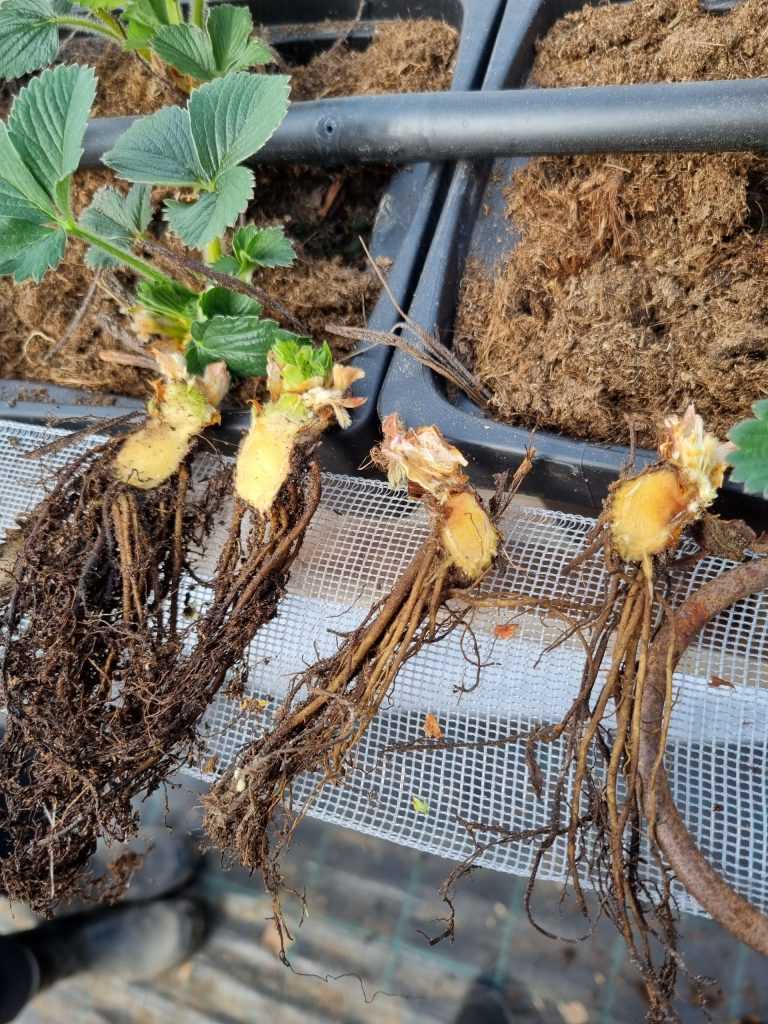
One of the major challenges in controlling Phytophthora is its unpredictable genetic variability. Phytophthora is known for its ability to rapidly develop resistance to control methods, making it difficult to achieve long-term control.
Phytophthora can undergo genetic mutations and recombination events, leading to the emergence of new strains with different genetic characteristics. This genetic variability allows the pathogen to adapt and overcome control measures that were previously effective.
This genetic variability is further increased by the ability of Phytophthora to reproduce both sexually and asexually. Sexual reproduction can result in the exchange of genetic material between different strains, leading to the creation of new combinations of genes. Asexual reproduction, on the other hand, allows for rapid multiplication of the pathogen without the need for genetic recombination.
The unpredictable genetic variability of Phytophthora poses a challenge for long-term control. The development of resistant strains can render some control methods ineffective, requiring the constant monitoring and adaptation of control strategies.
To address this challenge, researchers are studying the genetic diversity of Phytophthora populations and developing new strategies that target multiple genetic traits. This approach aims to minimize the chances of resistance development by targeting multiple pathways essential for the pathogen’s survival.
Overall, the unpredictable genetic variability of Phytophthora makes long-term control difficult. Continuous research and adaptive control strategies are needed to effectively manage this devastating plant pathogen.
Pathogen’s Persistence in Soil
Phytophthora is a persistent and devastating plant pathogen that can survive in the soil for extended periods of time, making it difficult to permanently eliminate from agricultural and natural ecosystems. The ability of Phytophthora to persist in soil is due to several factors:
- Resistance to environmental conditions: Phytophthora is capable of withstanding a wide range of environmental conditions, including temperature extremes, moisture levels, and pH variations. This allows the pathogen to survive and remain viable in soil for extended periods.
- Production of survival structures: Phytophthora can produce resistant survival structures, such as oospores and chlamydospores, which can remain dormant in soil for extended periods. These structures serve as a source of inoculum, capable of infecting susceptible plants when favorable conditions arise.
- Long-distance movement: Phytophthora can be spread through soil movement, contaminated plant material, infected water, or human activities, allowing the pathogen to colonize new areas and contribute to its long-term survival in soil. The movement of Phytophthora-infested soil or plant material can result in the introduction of the pathogen to previously uninfected regions.
- Wide host range: Phytophthora has a wide host range, infecting various plant species. This allows the pathogen to establish itself in different ecosystems, increasing its likelihood of survival in the soil by providing a constant source of susceptible plants for infection.
To effectively control and manage Phytophthora, it is crucial to understand and address these factors that contribute to its persistence in soil. Implementing integrated disease management strategies, such as crop rotation, use of resistant plant varieties, and proper sanitation practices, can help reduce the pathogen’s impact and limit its long-term survival in the soil.
| Factor | Description |
|---|---|
| Resistance to environmental conditions | Phytophthora can withstand temperature extremes, moisture levels, and pH variations. |
| Production of survival structures | Phytophthora can produce oospores and chlamydospores that remain dormant in soil. |
| Long-distance movement | Phytophthora can be spread through soil movement, contaminated plant material, infected water, or human activities. |
| Wide host range | Phytophthora infects a variety of plant species, allowing it to establish itself in different ecosystems. |
Host Range and Cross-Contamination
Phytophthora species are known to have a wide host range, meaning they can infect a variety of plant species. This makes it difficult to control and eliminate these pathogens completely. Different Phytophthora species have different host preferences, but many are capable of infecting multiple plant species.
One of the main reasons why Phytophthora cannot be permanently eliminated is the ease at which it can spread and cross-contaminate different plants. Phytophthora species produce numerous and highly durable spores that can be easily carried by wind, water, animals, or humans. These spores can survive in soil, water, or plant debris for long periods, allowing them to infect new hosts when favorable conditions arise.
The movement of infected plant material, such as seeds, seedlings, or even mature plants, can also facilitate the spread of Phytophthora. Infected plants or plant parts can unknowingly carry the pathogen to new areas, where it can establish itself and infect other susceptible hosts.
Moreover, Phytophthora can also survive as oospores, which are thick-walled resting structures that can survive in adverse conditions for extended periods. Oospores can be produced when Phytophthora species sexually reproduce, allowing them to survive even when other spore types cannot. The long-term survival of oospores in soil or plant debris enables the pathogen to persist and re-infect plants in the future.
Therefore, the broad host range and the ability to cross-contaminate different hosts contribute to the persistent presence of Phytophthora and the difficulty in achieving long-term control and eradication. Efforts to manage and control Phytophthora need to consider its ability to infect multiple plants and its potential for spreading through various means of dissemination.
Reservoirs in Plant and Water Bodies
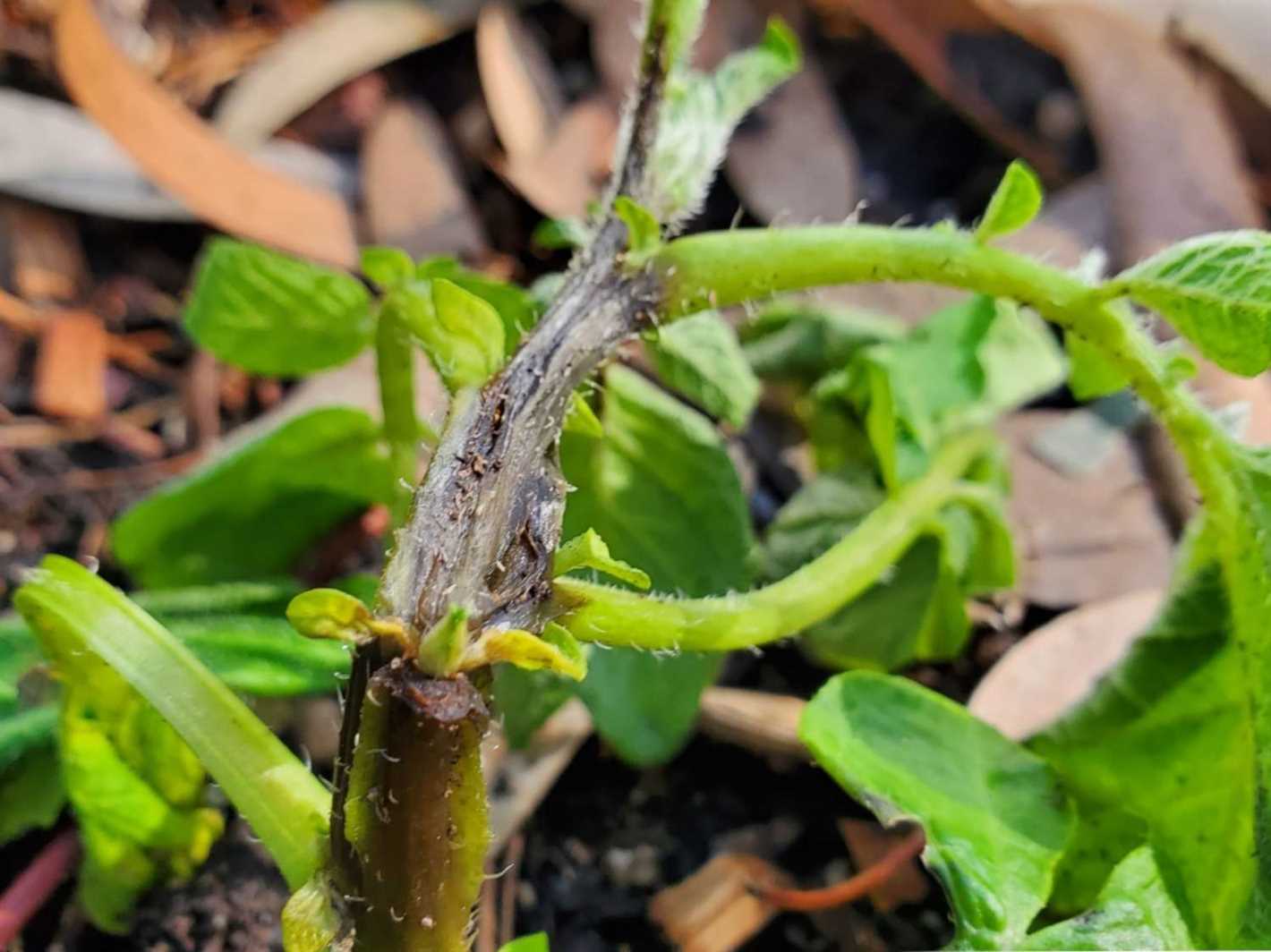
Phytophthora pathogens can persist in various types of reservoirs, including plant and water bodies, contributing to their long-term survival and spread.
Plant Reservoirs
Infected plant material can serve as a reservoir for Phytophthora. Phytophthora pathogens can colonize and survive in plant tissues, including roots, stems, leaves, and even fruits. The pathogens can remain dormant in infected plant debris or persist in weakened or asymptomatic plants.
These reservoirs can act as a source of inoculum, leading to the re-emergence of Phytophthora diseases in subsequent growing seasons. The pathogens can be spread through infected plant material, such as seedlings, cuttings, or vegetative propagules. Additionally, Phytophthora can produce long-lived oospores in infected plants, creating a persistent source of inoculum that can survive in soil for several years.
Water Bodies
Water bodies, including rivers, lakes, reservoirs, and irrigation systems, can act as reservoirs for Phytophthora. Phytophthora can survive and reproduce in water, forming structures called sporangia and swimming zoospores. These zoospores are released into the water, allowing for long-distance dispersal and contamination of plants.
Water plays a crucial role in the life cycle of Phytophthora pathogens. It provides a means of dispersal and facilitates the infection of plants. Phytophthora species are often found in wet or water-logged environments, where they can thrive and persist. The ability of Phytophthora to survive in water bodies contributes to its ability to spread rapidly and cause new outbreaks.
Interactions between Plant and Water Reservoirs
The interaction between plant and water reservoirs can create a continuous cycle of infection and reinfection. Infected plant material can release Phytophthora inoculum into water bodies, allowing for the pathogen’s dispersal and contamination of new plants. The pathogen can then colonize and survive in the newly infected plants, creating a new source of inoculum for future outbreaks.
This cycle of infection and reinfection can make it difficult to permanently eliminate Phytophthora. Efforts to control the pathogen must consider both plant and water reservoirs to effectively manage the disease. Implementing strategies to reduce the presence of infected plant material and to prevent the contamination of water bodies can help to mitigate the spread of Phytophthora and limit its long-term impacts.
Overall, the presence of reservoirs in plant and water bodies plays a significant role in the persistence and spread of Phytophthora pathogens. Understanding these reservoirs is crucial for developing effective strategies for long-term control and management of Phytophthora diseases.
Climate and Environmental Factors
Several climate and environmental factors contribute to the persistence and spread of Phytophthora species, making it difficult to permanently eliminate them.
- Temperature: Phytophthora pathogens thrive in a wide range of temperatures, with some species capable of surviving in both cold and warm climates. This adaptability allows them to persist and spread in diverse environments.
- Rainfall and Moisture: Many Phytophthora species are waterborne, and their spores are spread through soil, water, or plant-to-plant contact. Rainfall or excessive moisture in the environment facilitates the dispersal of spores, aiding their survival and colonization in new areas.
- Soil Composition: Phytophthora pathogens can survive in different soil types, including both sandy and clayey soils. Some species are also capable of forming long-term survival structures called oospores, which can remain viable in the soil for extended periods, even in the absence of hosts.
- Plant Host Susceptibility: The susceptibility of various plant species to Phytophthora pathogens varies. Some plants may exhibit resistance or tolerance to specific Phytophthora species, while others may be highly susceptible. The presence of susceptible hosts significantly contributes to the persistence and spread of these pathogens.
- Environmental Stress: Phytophthora species can exploit plants that are weakened or stressed due to environmental factors such as drought, heat, or nutrient deficiency. When plants are under stress, their natural defense mechanisms are compromised, making them more susceptible to Phytophthora infections.
- Human Activities: Human activities, such as the movement of contaminated plant material or equipment, can inadvertently introduce and spread Phytophthora pathogens. Agriculture, forestry, horticulture, and landscaping practices play a significant role in the introduction and dissemination of these pathogens.
In conclusion, the resilience of Phytophthora pathogens to various climate and environmental factors, coupled with their ability to exploit susceptible plant hosts, contributes to their persistence and makes their permanent elimination a challenging task.
Lack of Effective Treatment Options
Phytophthora is a challenging pathogen to control due to the limited effectiveness of available treatment options. While several fungicides are available for managing Phytophthora infections, they often have limitations.
Fungicide Resistance
One of the main challenges in controlling Phytophthora is the development of fungicide resistance. Over time, the pathogen can evolve and become resistant to the active ingredients in fungicides, rendering them less effective or completely ineffective.
Additionally, prolonged and extensive use of fungicides can lead to the selection of resistant strains, further reducing the effectiveness of treatment options. The genetic diversity and adaptability of Phytophthora make it particularly prone to developing resistance, making it difficult to rely solely on fungicides for long-term control.
Environmental Concerns
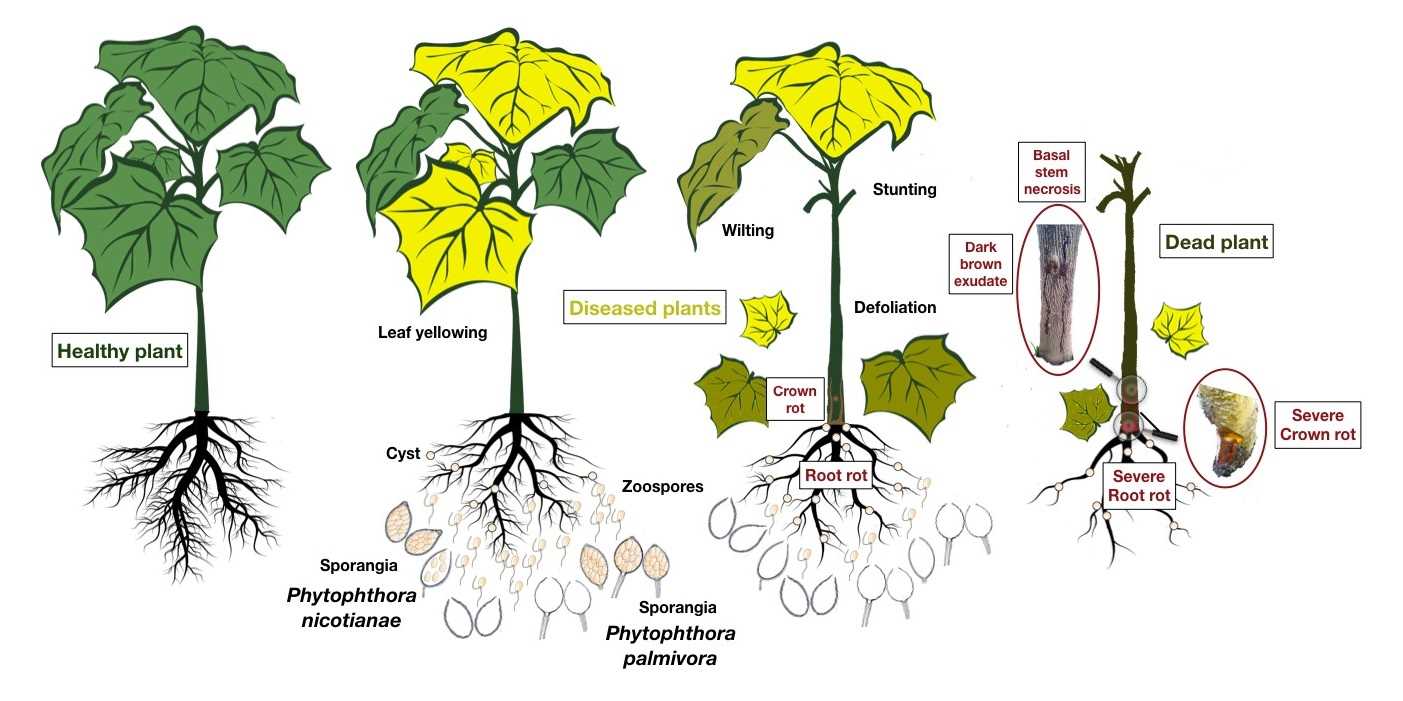
Another limitation of fungicides is their impact on the environment. Many fungicides can have negative effects on non-target organisms and ecosystems. They may persist in the environment, leading to accumulation and potential contamination of water bodies, soil, and plants.
Due to these environmental concerns, the use of fungicides is regulated, and their application is often restricted or limited to specific situations. This further complicates the management of Phytophthora and hinders the development of effective treatment strategies.
Limited Spectrum of Activity
Fungicides also have a limited spectrum of activity, meaning they may not be effective against all Phytophthora species or strains. Some fungicides may only target certain life stages or specific modes of action, leaving other stages or mechanisms unaffected.
This limited efficacy can be a major challenge in controlling Phytophthora, as different species or strains may have varying susceptibilities to different fungicides. It also means that a single fungicide may not be sufficient to control the wide range of Phytophthora pathogens, requiring the use of multiple treatments or combination strategies.
Integrated Management Approaches
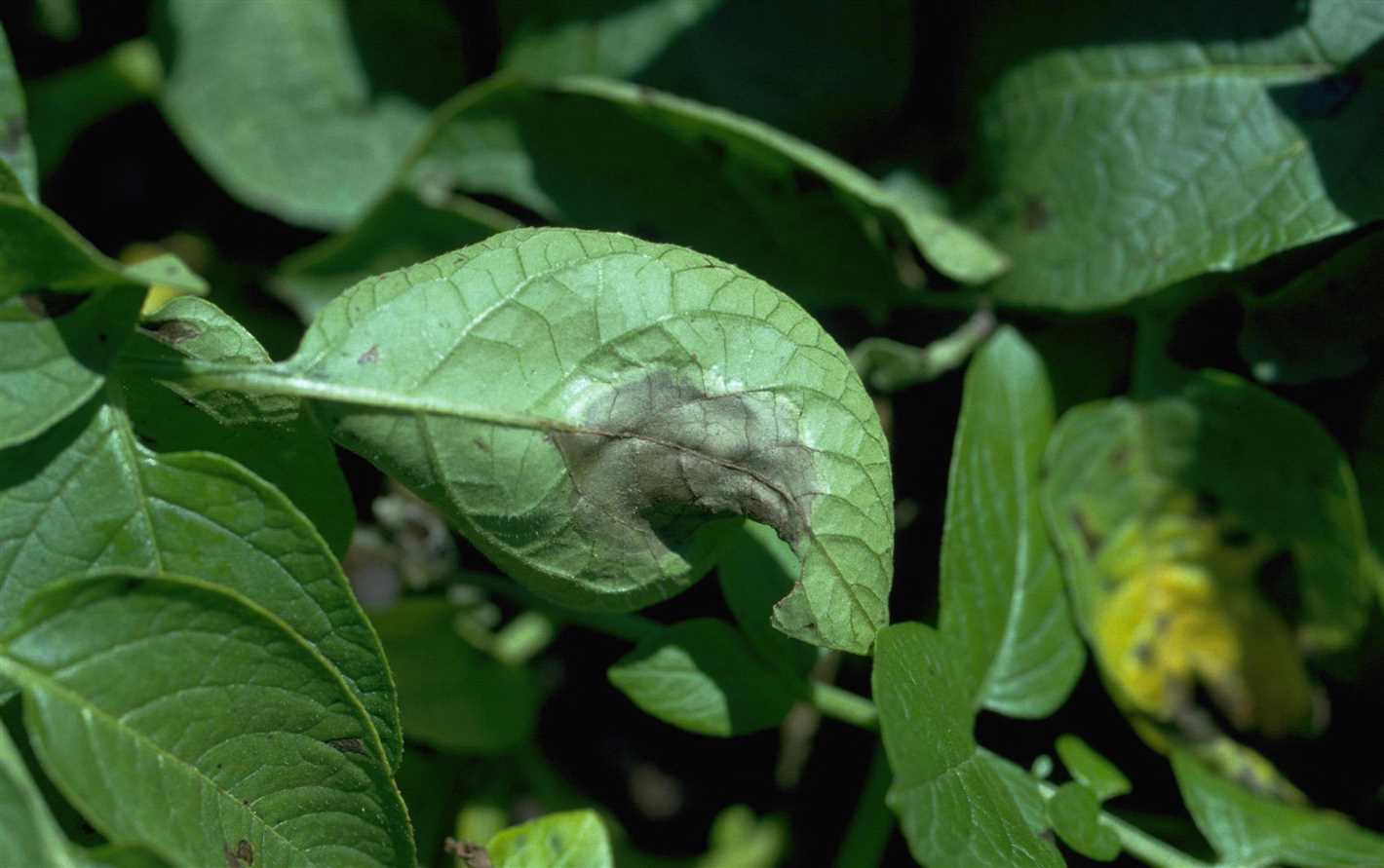
Given the limitations of fungicides alone, integrated management approaches that combine different strategies are often recommended for effective control of Phytophthora. This may include cultural practices, resistant cultivars, biological control agents, and risk assessments.
By combining multiple approaches, it is possible to reduce the reliance on fungicides and develop more sustainable long-term control strategies. However, it is important to continue researching and developing new and improved treatment options to overcome the challenges posed by Phytophthora.
Human Intervention and Transport
Human intervention and transport play a major role in the spread and persistence of Phytophthora species. Due to their microscopic size and resilience, these pathogens can easily be transported over long distances by infected plants, soil, water, or even human activity.
Plant Trade
The global trade of plants and plant products is one of the primary pathways for the introduction and spread of Phytophthora pathogens. Infected plants can carry the pathogen in their roots, stems, leaves, or fruits, and if not properly inspected, they can be unknowingly transported across borders and continents. Once introduced into a new area, the pathogen can establish itself in the local environment and continue to spread.
Furthermore, the diversity of plants traded globally allows for the introduction of new Phytophthora species or strains that may exhibit different levels of resistance to control measures. Therefore, it is crucial to implement strict quarantine measures and inspections to prevent the introduction and spread of Phytophthora via plant trade.
Soil and Water Movement
Phytophthora species can also be disseminated through the movement of contaminated soil or water. Infected soil particles can cling to shoes, equipment, or vehicles and unknowingly transport the pathogen to new areas. Similarly, contaminated irrigation water, rainwater, or floodwater can carry the pathogen and spread it to previously unaffected regions.
It is important to implement proper sanitation practices, such as cleaning and disinfecting equipment and vehicles, to prevent the unintentional dispersal of Phytophthora pathogens. Additionally, proper drainage systems and water management strategies can help minimize the movement of contaminated water and reduce the spread of the pathogen.
Human Activities
Human activities, such as farming, gardening, and recreational outdoor activities, can also contribute to the spread of Phytophthora. For example, improper disposal of infected plant materials or contaminated soil can lead to the establishment of the pathogen in new locations. Moreover, the movement of infected plant materials from one garden to another can facilitate the spread of the pathogen within local areas.
Education and awareness programs are essential to promote responsible gardening and farming practices, including the proper disposal of infected plant materials and the use of disease-resistant plant varieties. These measures can help minimize human-mediated spread and reduce the impact of Phytophthora on agriculture and natural ecosystems.
In conclusion, human intervention and transport significantly contribute to the spread and persistence of Phytophthora pathogens. Strict quarantine measures, proper sanitation practices, and responsible gardening and farming practices are crucial for preventing the introduction and spread of these destructive plant pathogens.
Need for Integrated Management Approaches
The challenges posed by Phytophthora highlight the need for integrated management approaches to effectively control and manage the disease. Integrated management involves the use of multiple strategies and techniques to target different aspects of the disease life cycle, in order to maximize control and reduce the impact of the pathogen on plant health.
Diversification of crops
One of the key components of integrated management is diversification of crops. By planting a variety of different crops or resistant cultivars, farmers can reduce the risk of Phytophthora infection and spread. This can help to disrupt the pathogen’s life cycle and limit its ability to establish and persist in agricultural fields.
Cultural practices
Implementing proper cultural practices can also play a crucial role in managing Phytophthora. This includes practices such as crop rotation, tillage, and sanitation. Crop rotation can help break the pathogen’s life cycle by reducing the availability of susceptible hosts, while proper tillage practices can bury infected plant debris, limiting the survival and spread of the pathogen. Sanitation practices, such as cleaning and disinfecting equipment and tools, can prevent the spread of the pathogen between fields.
Chemical control
Chemical control measures can be an important tool in managing Phytophthora, although they are not a standalone solution. Fungicides and other chemical treatments can be used to suppress pathogen populations and protect plants from infection. However, their long-term efficacy is often limited due to the development of resistance in the pathogen population, as well as potential environmental and health concerns. Therefore, chemical control should be used in combination with other management strategies to achieve long-term control.
Biological control
Biological control methods, using natural enemies or antagonists of the pathogen, can also be integrated into management approaches. This can involve the introduction of beneficial organisms, such as certain bacteria, fungi, or nematodes, which can suppress the growth and spread of Phytophthora. However, the use of biological control agents requires careful consideration and evaluation to ensure their effectiveness and minimize potential negative impacts on the environment.
Research and education
Continued research and education are essential for developing and implementing effective integrated management strategies for Phytophthora. This includes the development of new resistant plant varieties, the identification of novel control methods, and the dissemination of information and best practices to farmers and other stakeholders. Collaboration between researchers, extension agents, and growers is crucial to address the challenges posed by Phytophthora and protect plant health.
In conclusion, the complexity of Phytophthora and its ability to evolve and adapt necessitate the implementation of integrated management approaches. By combining different strategies and techniques, farmers and researchers can work towards long-term control of the disease, minimizing its impact on agricultural production and plant health. However, continuous research and monitoring are paramount to stay ahead of the pathogen’s ever-changing nature and uncover new solutions.
“Question-Answer”
What is Phytophthora and why is it difficult to eliminate?
Phytophthora is a type of plant pathogen that causes various devastating diseases. It is difficult to eliminate because it has several mechanisms and inhibitors that prevent long-term control. These inhibitors allow the pathogen to survive and persist in the environment, making it challenging to completely eradicate.
What are some inhibitors that prevent the long-term control of Phytophthora?
There are several inhibitors that prevent the long-term control of Phytophthora. These include the pathogen’s ability to form durable structures called oospores, which can survive in the soil for extended periods. Additionally, Phytophthora has the capacity to produce a large number of propagules that can spread rapidly and infect new hosts. The pathogen also has the ability to adapt and evolve, allowing it to overcome control measures.
Why are oospores a significant inhibitor in controlling Phytophthora?
Oospores are a significant inhibitor in controlling Phytophthora because they can survive in the soil for several years, even without a host plant. This means that even if infected plants are removed, the oospores can remain dormant in the soil and re-infect new hosts when conditions are favorable. Oospores are highly resilient and can withstand various environmental stresses, making them a major challenge in controlling Phytophthora.
How does the rapid production of propagules contribute to the difficulty of controlling Phytophthora?
The rapid production of propagules by Phytophthora contributes to the difficulty of control because it allows the pathogen to spread quickly and infect new hosts. These propagules can be dispersed through water, wind, or through human activities, making it challenging to prevent their spread. Even if infected plants are removed, the presence of propagules in the environment can lead to re-infection and the persistence of the pathogen.
What are some control measures that have been used against Phytophthora?
There are several control measures that have been used against Phytophthora, including the use of fungicides, resistant plant varieties, and cultural practices. Fungicides can help in reducing the severity of the disease, but they are not always effective in completely eliminating the pathogen. Breeding and using resistant plant varieties can provide some level of control, but Phytophthora has the ability to overcome host resistance over time. Cultural practices such as proper sanitation, crop rotation, and avoiding waterlogged conditions can also help in reducing the spread and severity of the disease.
Why is the adaptability and evolution of Phytophthora a challenge in controlling the pathogen?
The adaptability and evolution of Phytophthora is a challenge in controlling the pathogen because it allows the pathogen to overcome control measures that are initially effective. Phytophthora has the ability to rapidly adapt to new environments and hosts, and it can evolve resistance to fungicides and host plant resistance. This means that control measures that were once effective can become ineffective over time, requiring the development of new strategies to manage the pathogen.
Can Phytophthora ever be permanently eliminated?
Phytophthora cannot be permanently eliminated due to its inherent mechanisms and inhibitors that prevent long-term control. While control measures can help in managing the pathogen and reducing the impact of diseases caused by Phytophthora, completely eradicating the pathogen is not currently feasible. Continued research and development of new control strategies are needed to better manage Phytophthora and minimize its impact on crops and natural ecosystems.







